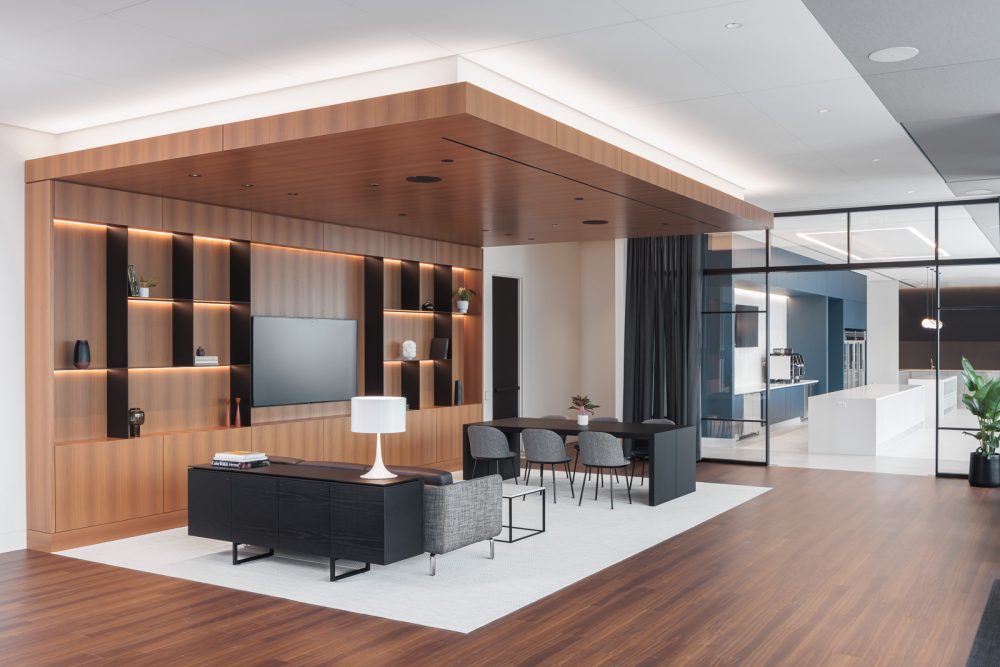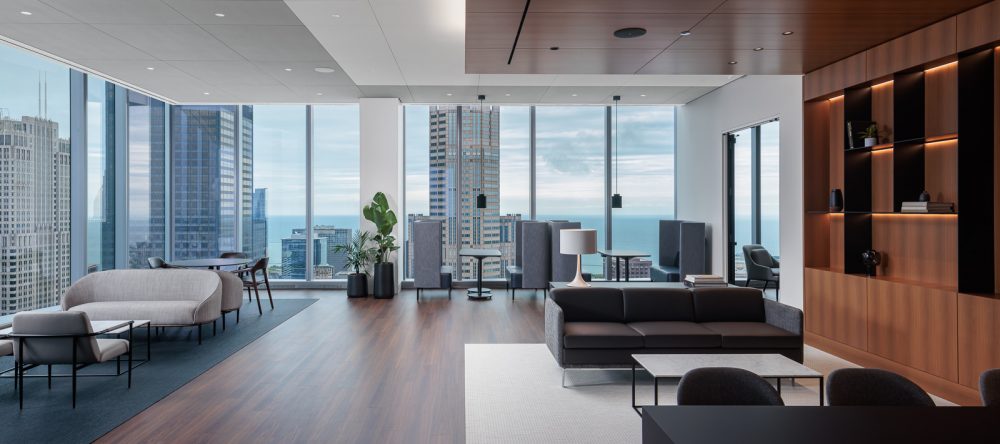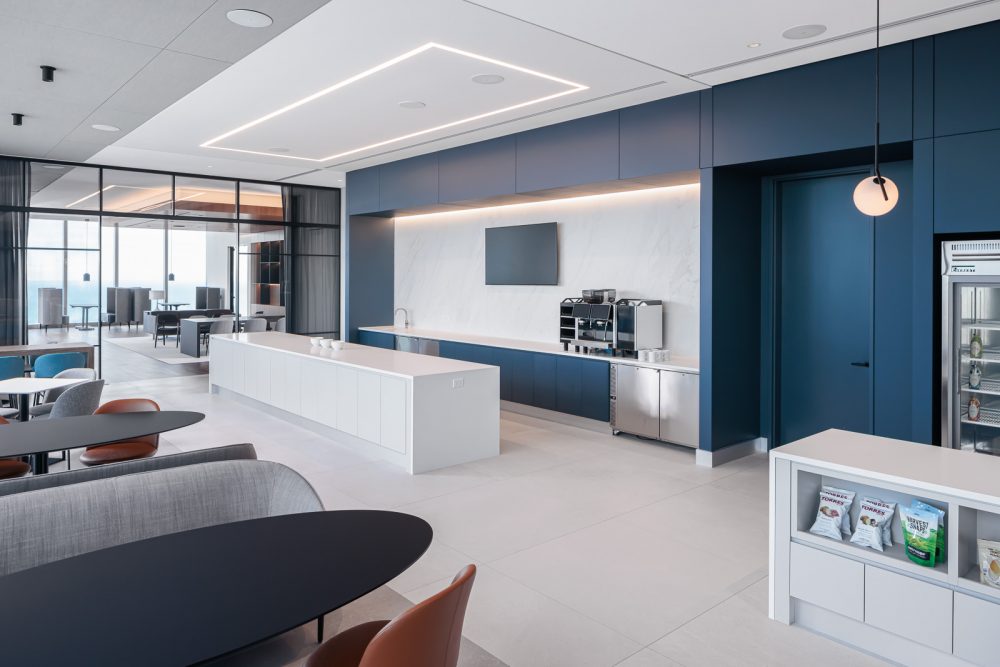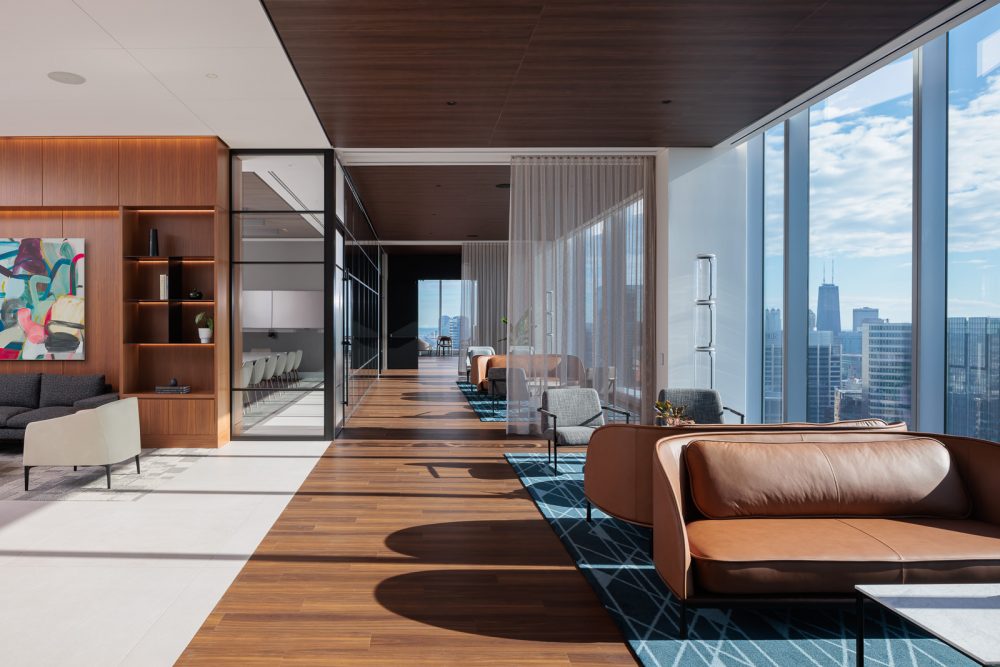Skender‘s Ashlee Pforr offers insights into what the law firm office needs to ensure its relevancy with the evolving needs of the workforce.
With the hybrid work model solidifying its place in the professional landscape, law firms are taking bold steps to redesign their offices and meet the demands of modern workplace culture. The goal? To create dynamic environments that not only boost productivity, but also enhance inclusivity and balance between work and life.
As leases come up for renewal, firms are rethinking their spaces to foster deeper cultural connections both among employees and with clients through a form-meets-function lens.

Flexibility for the Future: Designing for Day Three
Modern law firms need more than just functional spaces—they need adaptable environments that can evolve with changing demands. Flexibility is key in modern law firm office design and construction. Spaces need to be created that can be adapted from what is needed today, to what may be needed in the future.
The right approach to “designing for day three” focuses on flexibility. Think: Incorporating modular walls that can be reconfigured as needed, versatile furniture that adapts to various work styles and common areas that can easily transition from collaborative hubs to quiet zones. This forward-thinking design ensures that office spaces remain relevant and efficient as the firm’s needs evolve, including addressing each firm’s hybrid policy and ensuring that aligns with the flexibility of their lease.

Customizing Office Spaces for Clients
Looks are everything in today’s competitive market, which is why law firms are upgrading their office spaces through the lens of their clients’ experiences. Often, this means looking at both site selection and office design from the perspective of their clients.
Modern tech-focused law firms, for example, are reimagining their spaces to mirror an innovative look and feel more like the dynamic environments of their tech startup clients. Beyond the office walls, this means choosing locations in tech-heavy areas near where those clients reside, like Fulton Market in Chicago, where new construction offers modern amenities and interiors that resonate with the aesthetic and functional expectations of tech clients.
Not only does strategic site selection and design customization appeal to clients, but it also creates a vibrant and innovative office atmosphere that makes employees feel inspired to come into work.
Using Space Efficiently
The pandemic has reshaped how space is utilized in offices. Initially, “hoteling” or “hot desking” was a popular solution for firms that didn’t have the desk space for every employee to have their own, but this trend has faced resistance from regular office-goers. Now, many law firms are finding a middle ground by creating coworking spaces for occasional visitors while providing dedicated desks and offices for those who frequent the office more than three times a week. This hybrid approach ensures efficient use of space while accommodating the diverse needs of the workforce.

Space is certainly a differentiator, but the one thing that gets people into the office more than anything is other people, so creating spaces where people can come together is imperative. Gen Z is more likely to come in than older generations, which means that a modern office should be outfitted with spaces that address mentorship, coworking, group meetings and amenities to encourage social interaction.
Building Digital Courtrooms and Meeting Rooms
Technology is essential for any workspace, but modern law firm offices in particular demand advanced technology that supports the partner experience and ensures seamless virtual interactions. This includes creating virtual courtrooms and case rooms equipped with the latest digital tools that allow for remote court sessions and collaborative work. Along with enhancing productivity and providing unique environments for digital interactions, the incorporation of mock courtrooms also energizes the firm by offering realistic practice settings for attorneys.
Still, in an increasingly virtual world, it’s important to emphasize the essence of human connectivity. Virtual collaboration is still very much a work in progress, where offices remain central for building personal relationships that increase longevity for employee and client retention. Investments in technology should serve to help employees work better and more efficiently to meet and exceed client expectations.

The Future of Law Firm Offices
As law firms navigate the complexities of a post-pandemic world, the redesign and reconstruction of their offices presents both challenges and opportunities. Technology costs will continue to grow, which is why it’s important that law firms adopt a “designing for day three” approach now for the future of their business.
By prioritizing flexibility, client-centric customization, efficient space utilization and technological integration, firms can create dynamic environments that support their evolving needs, ensuring they remain productive, inclusive, and balanced for years to come.

